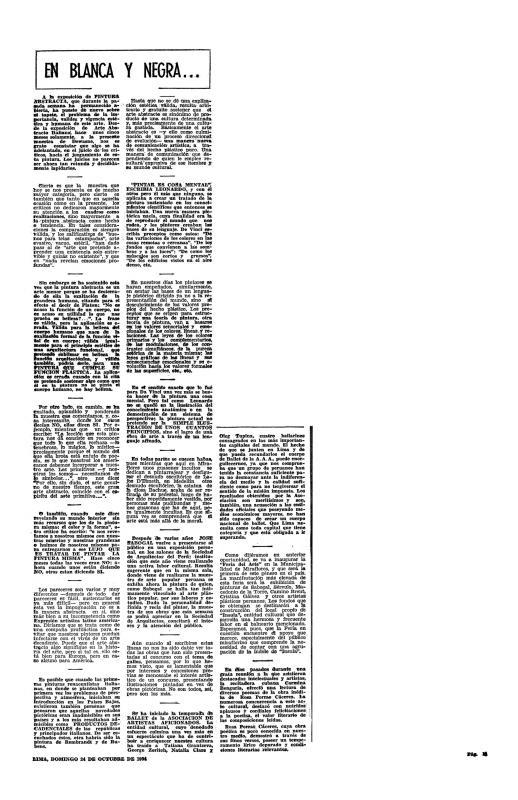In this article, it is interesting to note the connections that the architect Luis Miró Quesada makes between non-figurative painting and the meaning of architecture.
Despite the popularity of abstract expressionism, works such as those produced by Jean Dewasne (1921–99) had a profound impact on Peruvian non-figurative art in the 1950s. During that decade several Peruvian painters visited his Atelier d’Art Abstrait in Paris, including Eduardo Gutiérrez (b. 1920) and Benjamín Moncloa (b. 1927), who had a distinguished career when he returned to Peru. More important still was the French artist’s visit to Peru in 1954 on the occasion of his exhibition at the Galería de Lima. That exhibition was part of an ambitious cycle that introduced Peruvians to European modernity (including works from Italy) and generated a year-long debate on the subject of abstract art. In Lima, Dewasne forged strong ties with non-figurative artists (including Szyszlo) and others who later took part in the Primer Salón de Arte Abstracto in 1958, an event that revealed the extent of Dewasne’s influence. [See the catalogue for the exhibition in the ICAA digital archive, (doc. no. 1143441)]. Largely encouraged by Luis Miró Quesada Garland (1914–94)—the grand champion of modernism—Lima critics on the whole acknowledged the quality of Dewasne’s work, thereby underscoring the potential of non-figurative art. [See the following article by Garland “En blanca y negra...” (doc. no. 859589)]. There were, however, important critics such as Sebastián Salazar Bondy (1924–64) and Edgardo Pérez Luna (1928–84) [see “De arte: Jean Dewasne en la Galería de Lima” (doc. no. 859484)], who questioned the relevance of this kind of painting in Latin America, a continent whose “germinal” status, in their opinion, demanded a form of art that reflected a broader social reality.



